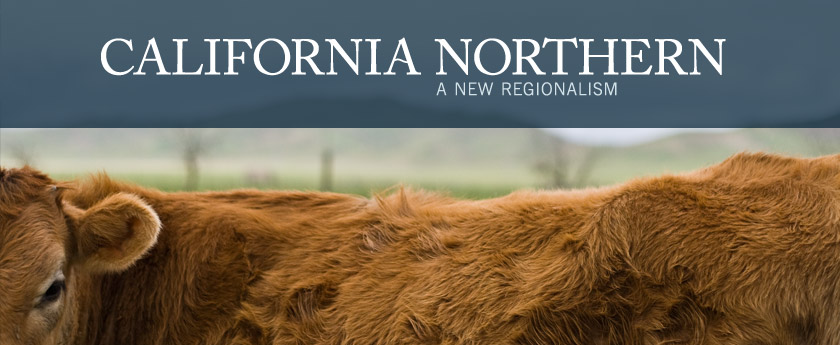A Renewable Conflict
By Casey Mills
The Panoche Valley appears out of nowhere. You take a sudden exit off I-5 about two hours south of Stockton, then head west into the hills. After passing through endless rows of almond orchards, you drive through a small canyon on a barely maintained road, the shoulders just two feet of rutted mud on either side, forcing you to pay close attention. Ford F-150s and big rigs carrying cattle occasionally shudder by, moving with a confidence hopefully borne from experience. A half-full seasonal creek moves alongside the road, and the views of rocky outcroppings and sparse chaparral provide a pleasant but not particularly unique backdrop for almost twenty miles. Then, the road suddenly becomes winding, briefly climbing a barren saddle before dropping down the other side. Three sharp turns down this saddle, and you’re suddenly in a scene from rural Scotland.
An expanse of perfectly flat land stretches out before you for miles, with ragged fence lines, multicolored dots of cattle, and small clumps of trees indicating a house or farm. There’s grass everywhere, so green it’s comical, a green usually reserved for travel brochures. The color so floods your field of vision, you’re momentarily thrown off balance. Across the valley, the ground begins to rise up, starting slowly and then rapidly ascending, ultimately ending in high peaks shrouded in fog and clouds.
This lonely, verdant valley may soon be home to 1.8 million solar panels.
Wind your way down to the valley floor, and after a couple of miles on a road passing lines of barbwire and rows of ragged trees planted for windbreaks, you’ll find Douglas Ranch, a livestock farm run by Rani Douglas and her husband. Rani will jump in your car and begin directing you along the valley’s narrow roads. She gives the kind of breathless tour that could only be provided by a true believer, one enthralled with an area’s beauty and convinced of its importance. She’ll take you back to the route you took to arrive here, asking you to reenter the valley slowly to fully appreciate it. She acts as if she’s seeing the valley for the first time again, working to get you to share her joy. It’s hard not to. She points out eagles, describes the foxes that pass through her property, details the history of a nearby hot spring, and rattles off the name of every farm and ranch you pass.
She also talks a lot about those 1.8 million panels, which would cover 4,717 acres of the valley floor. If approved, it would be the biggest solar farm of its kind in the world. You won’t find her excited by that possibility.
Not an activist or even a self-identified environmentalist before she found out about the plans for the valley, Rani has begun a crusade to ensure her corner of California remains untouched. She heads up a small band of local residents who call themselves “Save Panoche Valley,” formed to ensure the solar panels never get built. While their farms aren’t in danger of being directly displaced, the group fears the project will disrupt the valley in a host of other ways. Some of their concerns are well-founded, some perhaps not—but to Rani and her neighbors, all of them are real.
The potential destruction of quality farmland sits at the top of Rani’s list. She talks about the grass in the valley with a reverence usually reserved for fine art, and will patiently explain to you that the valley lies in an area far enough north to allow cold season grasses to grow, but far enough south so they don’t freeze. This allows for year-round grazing, giving the grass an especially high nutritional value that makes for better meat.
This is an excerpt of “A Renewable Conflict”

